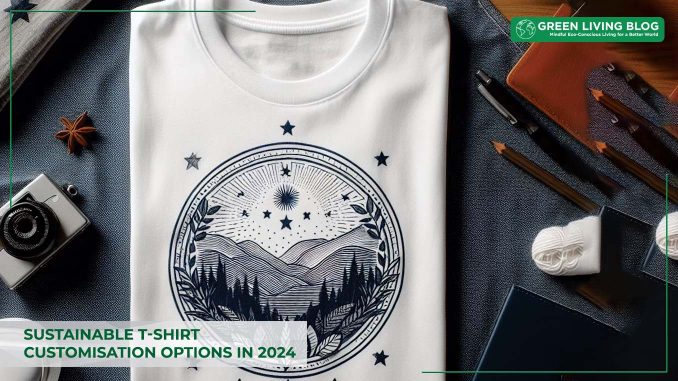
Sustainability is a buzzword that’s taken pretty much every industry by storm over the past decade or so.
Behind that buzzword lies the imperative that we take seriously our responsibility towards the planet, both the natural environment that supports us and the people that we live alongside.
While sustainability as a whole can seem an overwhelming concept, it can be broken down into more manageable chunks.
In this piece, we focus specifically on sustainability in fashion in the context of t-shirt customisation, so that you can take an informed approach to your own branding efforts going forward.
1. Organic Fabrics

When customising a batch of t-shirts, the first thing to focus on is the fabric that you’re using. A safe way of searching for sustainable fabrics is to go with an organic option. To take on the tag ‘organic’, these kinds of fabric producers are generally required to abide by very high standards in terms of their environmental impact.
If you’re unsure of where to start that search, then it’s worth taking a look at stockers such as Screen Textiles. They’ll have a wide range of different options, coming in at a variety of different pricing points.
2. Sustainable Inks
While the fabric is important, one of the most environmentally damaging aspects of t-shirt customisation lies in the choice of ink you end up going with. If you’re going to have the t-shirts printed, then you need to make sure that you choose a sustainable ink that’s produced using environmentally friendly techniques. There are a lot of potential options out there, each with its respective pros and cons.
3. Smaller Designs
A really simple way to minimise the environmental impact of your T-shirt customisation is to go with a smaller design. Whether you’re choosing to go with embroidery or screen printing, the smaller the design, the less amount of material you’ll need to use to create the end result. Subtle branding often tends to go a long way, meaning you won’t be losing out in terms of brand impact.
4. A Focus on Quality

Lastly, one of the most unsustainable aspects of the fashion industry is how much waste is produced. Even if you use incredibly sustainable practices and materials to produce a garment, if that garment can only be worn for a couple of weeks or months before it needs to be thrown away, it is still massively wasteful.
As a result, a focus on quality needs to lie at the heart of sustainability-orientated drives. Making sure that the items you buy and produce last for as long as possible should be a top priority, right up there with choices of ink and fabric.
Closing Thoughts
Clearly, t-shirt customisation doesn’t have to come at the cost of the environment. By taking these important factors into consideration, you can produce a set of sustainable designs that will serve your business for years to come. It’s important to think about how sustainability concerns can be brought into every area of your business, from logistics to marketing, to leave behind a planet that future generations can still enjoy.
![]()
Author Profile
- Online Media & PR Strategist
- Blogger and Educator by Passion | Senior Online Media & PR Strategist at ClickDo Ltd. | Fascinated to Write Lifestyle Blogs in News & Education I have completed a journalism summer course at the London School of Journalism and manage various blogs.
Latest entries
 Green GuidesMay 29, 202519 Best Eco-Friendly Products, Services & Gifts – With Special Deals
Green GuidesMay 29, 202519 Best Eco-Friendly Products, Services & Gifts – With Special Deals List postMay 28, 202510 Everyday Items with PFAs (‘Forever Chemicals’) and Green Alternatives
List postMay 28, 202510 Everyday Items with PFAs (‘Forever Chemicals’) and Green Alternatives List postMay 22, 20258 Eco-Friendly & Energy-Saving Home Gadgets for Daily Routines
List postMay 22, 20258 Eco-Friendly & Energy-Saving Home Gadgets for Daily Routines Green LivingMay 15, 20258 Healthy BBQ Swaps for a Cleaner, Greener, Guilt-free Grillfest
Green LivingMay 15, 20258 Healthy BBQ Swaps for a Cleaner, Greener, Guilt-free Grillfest






Leave a Reply
You must be logged in to post a comment.